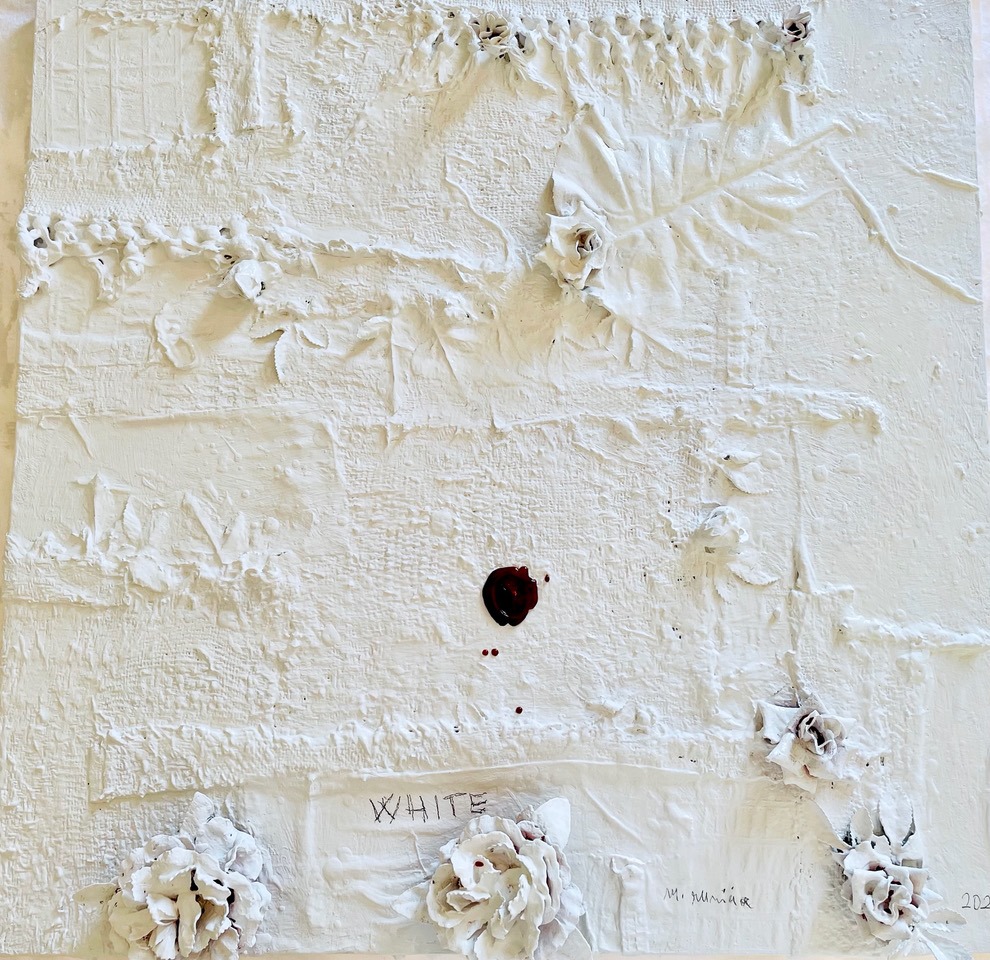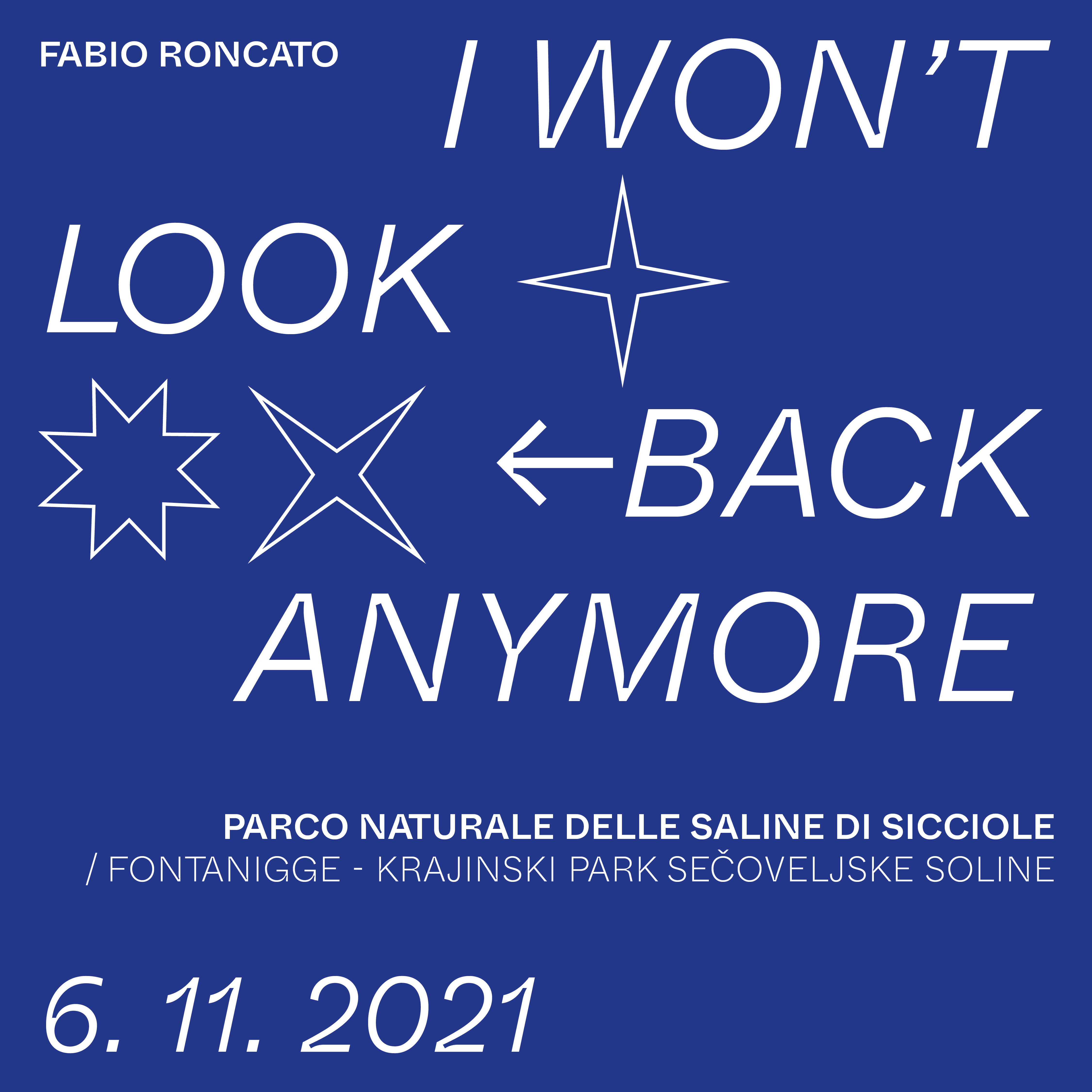I WON’T LOOK BACK ANYMORE

WHITE BELA BIANCA WEISS
11/02/2021Kostanj, olje in mlado vino
11/05/2021
Site specific instalacija Fabia Roncata
Vabilo na odprtje, v soboto, 6. novembra 2021, ob 11.00
Fontanigge, Krajinski park Sečoveljske soline
Navada solinarjev je bila, da so dež, ki bi lahko za nekaj dni preprečil žetev soli, napovedovali s pomočjo ploda dolgokljunatega čapljevca, ki so mu rekli ‘paieta’. Ta se je namreč glede na vlago obračal v smeri juga ali levanta. S tem preprostim pripomočkom so pridobili nekaj časa za priprave, preden bi nebo postalo grozeče in zagotovo uničilo žetev.
I won’t look back anymore je site-specific instalacija, ki si jo je zamislil in zasnoval umetnik Fabio Roncato kot odsev in poklon liku solinarja, obmejnega človeka ter zgodovinskega in kulturnega simbola obmorskega območja.
Delo sestavlja roža vetrov, ki jo je izkopal v solnih bazenih ter jo napolnil z zemljo z italijansko-slovenske meje, kar simbolizira ponovno srečanje tamkajšnjega prostora z italijanskimi solinarji, ki so nekoč morali te kraje zapustiti. Rožo vetrov, ključen element v napovedovanju uspešnega dela, ki ga narekujejo vremenske razmere, bo mogoče videti zaradi različnih barv prsti, ki se bodo počasi mešale med seboj, umetniško delo pa bo izginilo v času. Njegova smer bo sovpadala z zemeljskimi koordinatami.
Umetniška instalacija je bila zasnovana posebej za Sečoveljske soline, zaradi preteklosti, ki ta prostor zaznamuje že stoletja in ki je mesto Piran in celotno obalo privedla do utrjevanja vezi z Beneško republiko.
Celoten proces nastajanja, postavitve in sprememb, ki jih bo umetniško delo doživelo v svojem ciklu, bodo gledalci lahko spremljali skozi fotografsko razstavo, ki bo postavljena spomladi 2022 v razstavnem prostoru Krajinskega parka Sečoveljske soline.
Dogodek pripravljata Clemente Miccichè in Giorgia Simioni, v sodelovanju s Sofio Gemelli.
Postavitev umetniške instalacije so omogočili Samoupravna skupnost italijanske narodnosti Piran, Obalna samoupravna skupnost italijanske narodnosti, Občina Piran, Skupnost Italijanov Giuseppe Tartini Piran, v sodelovanju s Pedagoško fakulteto Univerze na Primorskem iz Kopra in ob podpori Obalnih galerij Piran.
Fabio Roncato se je rodil v Riminiju leta 1982. Po začetnem študiju slikarstva na Akademiji za likovno umetnost v Breri je razvil svojstven umetniški slog, ki ga je privedel do eksperimentiranja z vedno novimi in drugačnimi tehnikami in materiali, pri čemer je pogosto uporabil elemente, ki ne sodijo v kanonično pripoved zgodovine umetnosti. Vsako njegovo delo je zgodba zase, ki pripoveduje o odnosu med umetnikom in obravnavanim materialom ter zajema vse faze njegovega estetskega raziskovalnega procesa.



